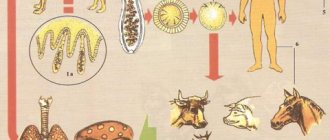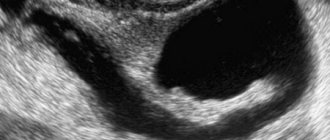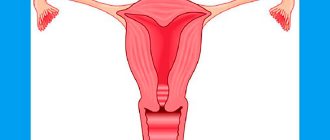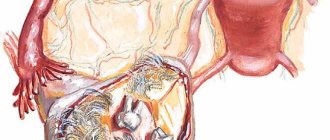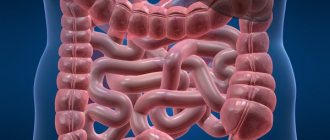Each segment (proglottid) of the bovine tapeworm includes male and female genital organs.
The head (scolex) is located in the center in the photo. The ox tapeworm (lat. Taeniarhynchus saginatus) is a helminth representing tapeworms of the family Taenia, which, together with other worms of this family, causes parasitic infections called taeniasis. In case of infection with this particular type of tapeworm, the disease is called teniarinchiasis.
The parasite is also commonly known as beef tapeworm or cattle tapeworm because it uses cows and other cattle as intermediate hosts. Man is the only definitive owner. Tenidosis affects people all over the world, the most common cases of the disease are recorded in some countries of Western Asia (Azerbaijan, Armenia), Eastern Europe, equatorial Africa, South America (Argentina, Brazil).
The bovine tapeworm is one of the longest worms that can parasitize the human body; it has no equal among other representatives of the genus Taenia (taenia). And among the tapeworms that use humans as the final host, it is second only to the broad tapeworm.
What is bovine tapeworm
Bull tapeworm is a white tapeworm. And this is not some tiny pinworm; its average size ranges from 4 to 10 meters. Cases have been recorded when particularly voracious parasites reached 22 meters. The width of the bull tapeworm is 5-7 millimeters.
On the round head of the parasite, about three millimeters in diameter, there are suction cups - four “fixtures” that help it attach to the donor’s intestinal wall and crawl. The smallest “detail” of a bovine tapeworm’s body is the neck. It consists of underdeveloped segments and serves as a “growth zone” for the helminth. The neck passes into the body, which consists of individual segments - proglottids. The division of the body into separate parts ranging from 16 to 30 millimeters in length is a feature of the bovine tapeworm. Proglottids form in the neck area. Having reached their maximum size, they become part of the main body (strobili). And the segments that are at the end of the strobile are separated.
Once separated, the segments are able to move independently of each other for some time. Young proglottids, located near the neck, have their own digestive system. The segments that “advance” closer to the end of the “tail” of the body become “containers” for eggs. Oval or round eggs covered with a thin shell contain embryos (oncospheres) equipped with three pairs of hooks.
Bovine tapeworm causes a disease called teniarinchiasis. The total number of helminth segments reaches two thousand. The segments detached from the strobila crawl out of the intestine, but due to the action of the “growth zone,” the “extent” of the bovine tapeworm does not decrease. On the contrary, over two decades of life it grows to a huge size, filling the donor’s intestines. At the same time, two and a half thousand segments are separated from the body per year, carrying millions of eggs. “Autonomous” segments can move throughout the human body and crawl out of the anus. Some of the proglottids are excreted in the feces. Sometimes “travelers” are found:
- in the ear;
- in the respiratory tract
- in the gallbladder;
- in vessels.
Important! Once outside the “host,” the eggs are viable for a month, infecting the ground and water bodies.
Adaptation to parasitism
Features of tapeworm that characterize adaptations to a parasitic lifestyle:
- The presence of an oral sucker, with the help of which the parasite is held in the host’s body.
- The dense integument of the body is the cuticle, which protects the parasite from digestion in the intestine of the host.
- Lack of locomotion, respiratory, digestive and circulatory systems.
- Poor development of the nervous system and lack of sensory organs.
- Feeding human intestines with food gruel.
- High fertility.
- Complex stages of development of the bovine tapeworm, change of hosts.
Ways of infection with bovine tapeworm
The helminth is unique in that it lives in the body of two hosts:
- intermediate;
- final.
Having left the human body, the segments of the bovine tapeworm crawl on the ground until they die, “float” in the water, scattering eggs with oncospheres - infectious larvae. Sooner or later, one or more oncospheres along with the grass will be swallowed by a cow. The larva, with the help of its hooks, will drill through its intestines and move along the circulatory and lymphatic systems. The bovine helminth received its name precisely because it uses bulls and cows as intermediate hosts.
The oncosphere can spread throughout the body of the intermediate host. At a certain moment, the larva enters the next phase: finna - a bubble with a head twisted inward. In order to live and develop, contaminated meat must reach the final owner, a human. Already in his intestines, the finna turns its head outward and attaches to the wall. She already looks very much like a real tapeworm.
As soon as the vesicle falls off, the process of producing proglottids will begin - the helminth will “grow up.” This takes about three weeks. And then the “evacuation” of sexually mature worm segments filled with eggs begins. A new round of the life cycle of the bull tapeworm begins. But you can only “catch” the parasite by eating undercooked or undercooked beef.
For humans, bovine tapeworm is dangerous because it causes:
- discomfort (movement of joints);
- lesions of the gastrointestinal tract (inflammation of the mucous membrane);
- pain (penetration of proglottids through the ileocecal valve);
- intestinal obstruction (excessively long tapeworm);
- lack of nutrients;
- allergic reactions.
Important! Finns live in the body of an intermediate host for no more than two years. Having not found a final host during this period, the larvae die.
Intermediate and definitive host of the parasite
The definitive host of the bovine tapeworm is humans. Infection occurs when eating meat infected with helminth larvae (finns), which happens when eating raw and half-raw meat. In the human body (intestines), the fins develop into an adult, which produces parasite eggs. Parasite eggs and segments containing parasite eggs are released into the external environment.
The intermediate host of bovine tapeworm is cattle, yaks, buffalos, zebras and possibly reindeer. Parasites in the form of eggs or segments enter their body when they eat grass, hay, or when licking urine located next to feces, with water and soil. Larvae are released from the eggs, which, through the circulatory system, enter the muscular and intermuscular connective tissue of the tongue, heart, skeletal and chewing muscles, where they develop into finn.
Rice. 4. In the photo, cows and yak are intermediate hosts of the bovine tapeworm.
Symptoms of teniarinhoz
The discharge of proglottids from the anus sometimes becomes the only sign that bovine tapeworm is “registered” in the body. Symptoms in humans , however , are very diverse:
- itching and discomfort in the anus;
- colic in the abdomen, reminiscent of an attack of pain due to appendicitis;
- nausea and vomiting;
- salivation;
- weakness;
- high or low appetite;
- stool disorders (diarrhea and constipation);
- dizziness;
- seizures;
- rash surrounded by crusts;
- anemia;
- inexplicable thinness;
- decreased immunity;
- manifestation of atypical pathologies (in cases of helminth larvae entering “inappropriate” organs).
Teniarinhoz develops in two stages. In the early stages, the disease is asymptomatic. As it becomes chronic, the number of symptoms increases and they become more pronounced.
Important! The head and proglottids of the helminth should not be thrown away or buried. Under certain conditions, they are able to enter the body of a new “host”. The “remains” of the tapeworm must be burned.
Causes
Since in order to become infectious to humans and cause taeniahrynchiasis, the bovine tapeworm must go through its life cycle and settle in the muscles of cattle, the cause of human infection is the consumption of insufficiently processed meat from these animals.
The bovine tapeworm dies at a temperature of 80 degrees, so well-boiled and fried beef, even if it contained bovine tapeworm larvae, does not pose a danger to humans. The same can be said about well-frozen meat - bovine tapeworm larvae die within a few days at a temperature of -15 degrees.
That is, based on the above, we can conclude that the route of infection with bovine tapeworm is food.
Most often, adults get sick, which is due to the peculiarities of their diet, and both men and women are equally susceptible to such a pathology as teniarinchiasis. True, there is a certain category of people who have an occupational predisposition to this disease. These are people who constantly deal with cattle - milkmaids, workers in slaughterhouses, meat processing plants, livestock breeders and shepherds.
Diagnosis of infection
It is not easy to determine infestation with bovine tapeworm because of the mild symptoms at the initial stage of the disease. To make a diagnosis, use:
➡ interviewing the patient (it is found out whether the patient has consumed raw, dried or undercooked meat);
➡ feces analysis, scraping (allows you to detect helminth segments);
➡ blood test (will indicate a decrease in the number of red blood cells, leukocytes, sometimes hemoglobin and an increase in the number of eosinophils);
➡ radiography (the image shows the presence of a helminth in the form of a light stripe about a centimeter wide);
➡ analysis of gastric juice (after infection, its acidity decreases).
Treatment of teniarynchosis
Therapy for the disease is designed to remove the parasite from the patient’s body. The results of treatment depend on the length of time the bovine tapeworm remains in the host’s body and on the number of helminths. The treatment regimen consists of three stages:
- preparation (cleansing the body of toxins released by parasites during life) - involves the use of sorbents;
- antiparasitic therapy - dewormers (anthelmintics) are used, which promote the detachment of the worm from the wall of the small intestine and provoke its “evacuation”. The drugs have side effects similar to the symptoms of the disease itself. During endoscopic treatment, the drug is injected directly into the small intestine;
- recovery (diet, immunization).
Treatment is carried out in a hospital or on an outpatient basis - after consultation with a doctor. Drug treatment is supplemented with enemas, the use of laxatives and herbal medicines. The results of therapy are assessed after three months - by the presence or absence of bovine tapeworm proglottids in the feces. Surgical intervention is extremely rarely used.
General state
The presence of a parasite in the body can be suspected by external signs. The worm absorbs almost all the beneficial substances that the stomach produces during the digestion of food, so infected people often have poor hair and nails. Inflammatory processes constantly occur on the skin, the skin becomes dry. Toxic substances from the worm can cause allergies. Urticarial exanthema may appear, that is, a rash with a dry crust.
At the same time, a person is constantly hungry, but eating more and more food, he does not gain weight, and there is even a decrease in body weight.
Intoxication of the body can be indicated by increased fatigue, irritability and insomnia. Some infected individuals even experience epileptic seizures.
In patients, the tongue increases in size or cracks appear.
Folk remedies
The toxicity of antiparasitic drugs is sometimes a reason to refuse to take them. The secrets of traditional medicine are adopted:
- Infuse two tablespoons of immortelle in a thermos and pour 0.5 liters of boiling water. After 12 hours, strain. Take 100 ml before meals 3-4 times a day;
- Eat a clove of garlic and drink a glass of carrot juice every day for a week;
- Pour two tablespoons of tansy with a glass of boiling water, leave for two hours, strain. Add milk and do an enema. Two days before it, do not eat meat;
- Chop four tablespoons of unripe walnuts and pour a glass of boiling water. Add a pinch of salt. After half an hour, strain. Drink during the day with a saline laxative;
- Peel the pumpkin seeds without touching the grayish skin. Eat in unlimited quantities until you feel disgusted. Do not eat or drink anything other than them. Two hours after the last use of the seeds, take a laxative;
- Pour a tablespoon of dried elecampane roots into 200 ml of boiling water. Let it brew. Every three hours, drink two tablespoons. Course – 4-5 days.
Important! When using tansy to make decoctions and infusions, strict adherence to dosages is necessary.
